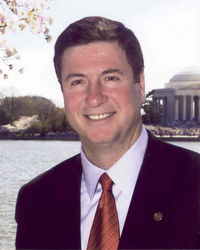(p. A1) SAN DIEGO — When San Diego’s school district began overhauling its science-education curriculum five years ago, it wanted to raise the performance of minority, low-income and immigrant students.
But parents in middle- and upper-income areas, where many students were already doing well, rebelled against the new curriculum, and a course called Active Physics in particular. They called it watered-down science, too skimpy on math.
A resistance movement took hold. Some teachers refused to use the new textbooks, which are peppered with cartoons. They gathered up phased-out texts to use on the sly. As controversy over the issue escalated, it played a part in an election in which the majority of the school board was replaced. Now, further curriculum changes are under consideration.
. . .
(p. A11) Mitz Lee, a parent activist at Scripps Ranch High, also a high-achieving school, continued quietly organizing opposition and eventually made it a cornerstone of her 2004 campaign for a seat on the school board.
Opposition to the program remained sharp among some veteran science teachers. Tom Deets, who teaches at Patrick Henry High, argued that freshman who hadn’t passed eighth-grade algebra weren’t ready for physics. Rather than teach the new course, he switched to math until the district offered him an administrative job.
Aiming to keep their hands on alternative teaching materials, an active underground sprang up, with teachers squirreling away old physics textbooks to make sure the district couldn’t collect them. "At one time, I probably had 400 books," says Hal Cox, a retired submarine commander who teaches physics at Hoover High School. "I put them in lockers, everywhere I could find."
The opposition came to a head with the school-board elections of 2004, when three critics of the district’s overall curriculum changes, including those in math and reading, were elected to its five-member school board. The winners included Ms. Lee, who had campaigned for an end to "fuzzy" science and was elected by the widest margin of the new board members. She has lately been pushing for giving individual schools more autonomy on course choice. "I don’t want any more central mandates," Ms. Lee says.
For the full story, see:
ROBERT TOMSHO. "Textbook Battle; Top High Schools Fight New Science As Overly Simple; San Diego’s Physics Overhaul Makes Classes Accessible, Spurs Parental Backlash; Test Scores Barely Budge." The Wall Street Journal (Thurs., April 13, 2006): A1 & A11.





 Charlie Munger. Sourge of image: online version of the NYT article cited below.
Charlie Munger. Sourge of image: online version of the NYT article cited below.  Alex Tabarrok. Source of image:
Alex Tabarrok. Source of image: 